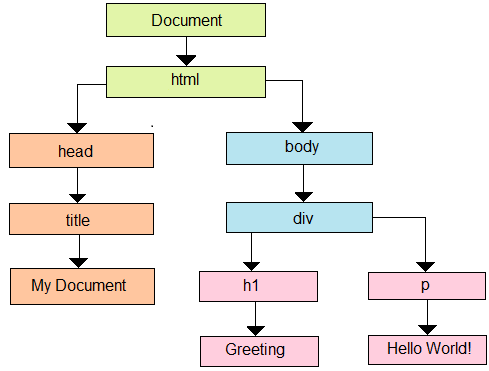Concepts of D3.js
D3.js is a library of JavaScript which is open source for some of the following essential concepts:
- Manipulated Data-Driven of the DOM (Document Object Model).
- Implementing with the shapes and data.
- Laying out the visual components for geographic, network, hierarchical, and linear data.
- Enabling efficient transitions among states of UI (User Interface).
- Enabling smooth user interaction.
Web Standards of D3.js
We are required to know with some web standards before proceeding with D3.js to make visualizations. In D3.js, some of the essential web standards can be used, which are listed as follows:
- HTML (Hyper Text Markup Language)
- DOM (Document Object Model)
- CSS (Cascading Style Sheet)
- SVG (Scalable Vector Graphics)
- JavaScript
Let’s explore and discuss the above web standards step by step in detail.
1. HTML (Hyper Text Markup Language)
Hyper Text Markup Language (HTML) can be used to structure the content of any webpage. HTML is stored inside the text file along with the “.html” extension.
Let’s consider an example.
Example:
The classic bare-bones Example of HTML appears as follows:
2. DOM (Document Object Model)
If any page of HTML is loaded through a browser, it will be transformed into any hierarchical structure. All the tags inside an HTML are transformed into an object/ element within the DOM along with the parent-child hierarchy. This method enables our HTML logically structured. When the DOM will be formed, it will be efficient to employ (remove/modify/add) the components over the page.
Let’s understand and explain the DOM with the help of an HTML document as follows:
The Document Object Model (DOM) for the HTML document is shown below:

3. CSS (Cascading Style Sheet)
Various styles of CSS can make any webpage more stylish, where HTML provides a structure for any webpage. CSS (cascading Style Sheet) is the style sheet language used to specify the document’s presentation written in an XML (including dialects of XML such as the XHTML or SVG) or HTML. CSS specifies how the components must be rendered over any webpage.
4. SVG (Scalable Vector Graphics)
A Scalable Vector Graphics (SVG) is used to render the images over the webpage. Although it is used to make the images with the use of the text, it is not any direct image. It is the Scalable Vector, as its name defines. It can scale itself based on the browser’s size; thus, the browser’s resizing will not alter the image. Every browser can support SVG, excluding IE8 and down from. The data visualizations are used for visual representation. It will be convenient to apply SVG to deliver visualizations with the use of the D3.js.
Assume of SVG like the canvas where we may paint distinct shapes. Hence, to begin with, let’s make SVG tag as follows:
SVG uses pixels as default measurements, thus we don’t require describing when the unit is any pixel. If we wish to draw any rectangle, we could draw it with the use of the code as follows:
We may draw another shape using SVG like the Path, Text, Ellipse, Circle, and Line.
Similarly as designing elements of HTML, styling the elements of SVG is quite simple. Let’s put the rectangles’ background color to any color whatever you want. We require inserting a “fill” attribute, and describing the values like red as shown as under:
5. JavaScript
JavaScript language is any loosely typed scripting language of the client-side that implements inside the browser of a user. This language interacts with the elements of HTML (elements of DOM) to create any web-user interface more interactive. The language executes ECMAScript standards that add core features according to the specifications of ECMA-262. It also adds other features that are not described based on the ECMAScript standards. The knowledge of the JavaScript is any prerequisite to the D3.js.
